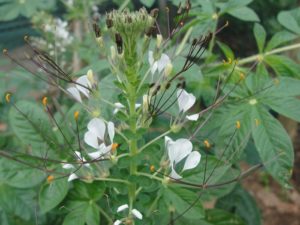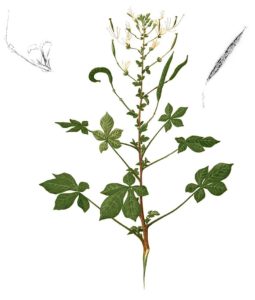Image source: Wikipedia Cleome gynandra
If there’s a memory I will treasure in life, it is most definitely that of being whisked off ‘kumusha’ (meaning rural home Zimbabwe) at the sudden appearance of the school holidays. I loved going to spend the holidays with the grandparents. It was always a time filled with excitement. I always carried my little suitcase to the bus station and I always hoped I’d get the window seat. This is of couse something that was never easily achieved because there was always competition for the fresh breeze in the August heat.
As the old Zupco bus zoomed across what was for me a picture of tranquil motherland I wondered if this time I would be herding cattle or going to the farm. The scenery was always beautiful though. Who wouldn’t love endless hills and mountains in the distance across the Sub-Saharan savanna with pit stops at small growth points.
Off We Go!
‘Mazai! Mabhanana, Mafreezit! Dhora Dhora ($1 each)!’ I loved to hear the curvaceous African lady almost sing at the top of her voice. They usually sell boiled eggs, bananas and ice pops in a basket artfully balanced at the top of her head.
A small pearl of sweat graces her soft dark skin as it rolls down her face. And off again we would go, towards the dust road.
Home Sweet Home
Once at our grandparents, family would greet and welcome us with songs and praises to God for bringing us safely as the sun was setting. The moon and stars would soon set the scene for a moonlight fire and we would barbecue fresh maize while singing around the fire.
In the morning the farm work would start.
One vegetable that came free from the environment, never farmed but appeared as what some would call weeds, is the African Cabbage. ( also known as Nyeve/ Runi/ Ulude/ African Spider Flower Leaves) .
I never quite enjoyed Nyevhe as child, but now thoroughly enjoy as an adult. This one’s a bit like marmite. For many young people it was the literal bitter taste of kumusha, and for some the bitter-sweet taste of good living. You know the kind that comes with the freedom and exploration of the countryside.
Some people even associated eating Nyevhe with poverty since it requited no planting and mostly came up as a weed.
WEEDS OR FOOD FIT FOR A KING?
(A lady from Kenya once laughed uncontrollably at our Mwanaka Enfield Branch upon hearing that we eat this vegetable. She said in Kenya it’s a well known weed. She laughed so much I started to laugh with her. She quickly quietened down though and listed carefully once I gathered myself and started telling her of the apparent Health Benefits.)
Did you know some people use Milk when cooking African Cabbage to dampen the bitter taste?

source: https://apeosupela.blogspot.com/2016/10/
Here are 4 reasons you should be adding Nyevhe to your list of essential vegetables in your home.
- Leaves are known to have anti-inflammatory properties:
Many of us suffering the effects of a lack of natural sunlight can add African Cabbage to our healthy diets to ease the effects of minor inflammatory ailments such as arthritis. This plant has been known to be used across Africa and Asia for all sorts of inflammatory ailments that range from arthritis to coughs and even asthma.
2. African Cabbage has more Iron than Spinach
The average amount of nutrients in fruits and vegetables has suffered a steady decline and Iron being one of the most important ‘blood building’ nutrients is getting harder to find in vegetables. Now instead of buying plenty of spinach, try cutting the cost by investing in some African Cabbage.
3. Spider Leaves are high in Vitamins A, C, Calcium and Phosphorus
What more do you need from a vegetable?
4. Spider Flower Leaves retain vitamins during cooking
Possibly the most important thing to remember while cooking vegetables is to minimise the amount of cooking to as to retain the most nutritional value possible. The African cabbage has the ability to retain most of its vitamins considering the amount if cooking required to eliminate some of its bitter taste.
Why not go down memory lane and remember the good ol’ days with the extended family around the fire with food that brings real value to life.
BUY NYEVHE HERE
Sources:
https://www.fondazioneslowfood.com/en/ark-of-taste-slow-food/spider-flower-leaves/
http://blogs.worldwatch.org/nourishingtheplanet/spider-plant-a-hardy-and-nutritious-african-native
Image:
https://www.zimbabweflora.co.zw/speciesdata/species.php?species_id=124330
Photo: Mark Hyde
Near Glenara Avenue South, Harare

